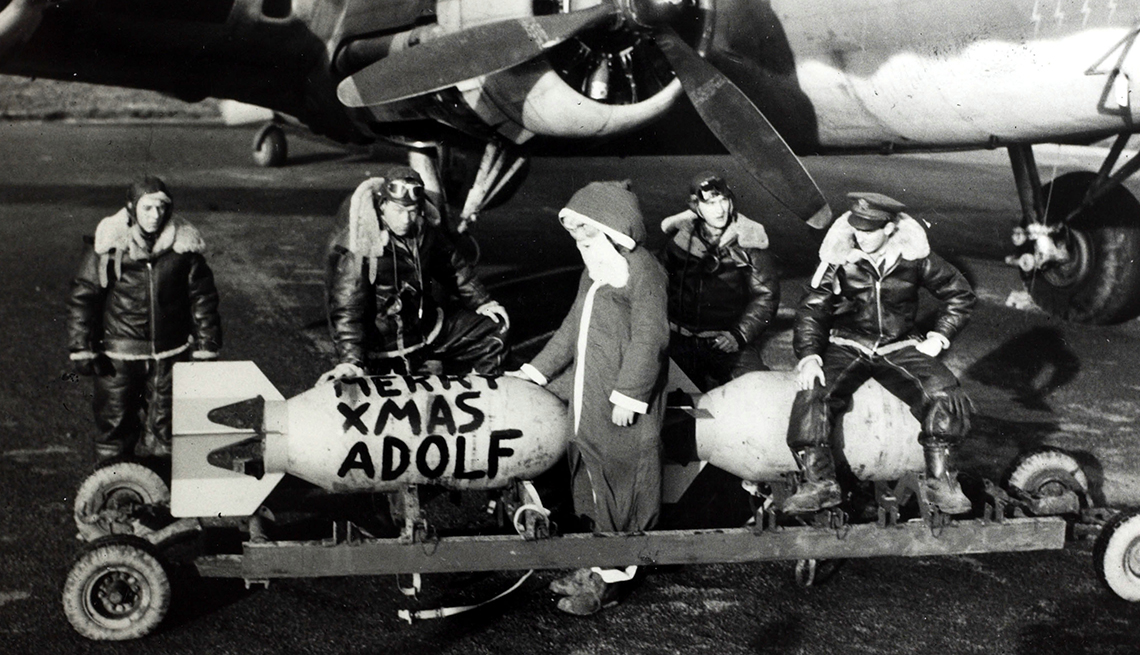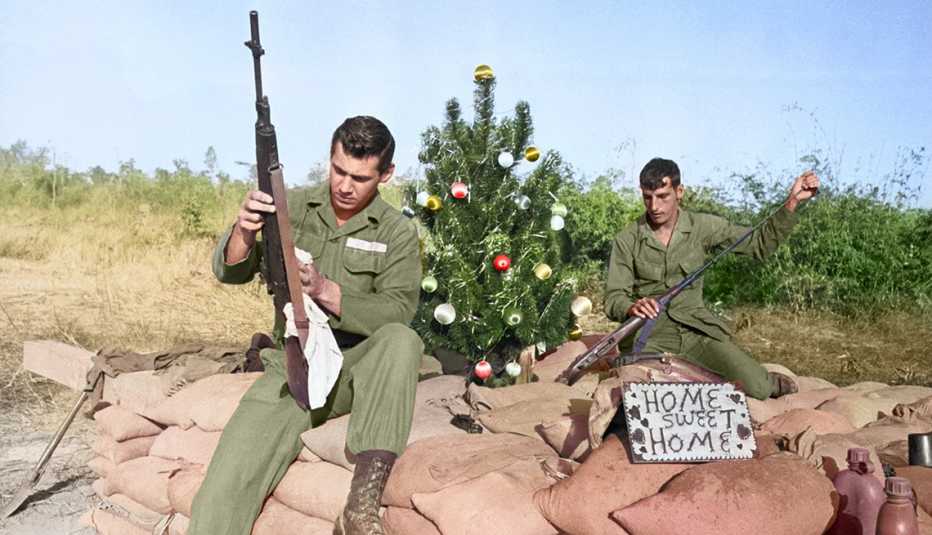Staying Fit
During the waning days of the Vietnam war, I was drafted into the Army and sent to Germany. My folks decided to fly over for a visit, and I wrote to my father, telling him I would drive them wherever they wanted to go sightseeing.


You can subscribe here to AARP Veteran Report, a free e-newsletter published every two weeks. If you have feedback or a story idea then please contact us here.
A quick response came with a long list of cities, many of them not mentioned in popular travel guides. I wrote back to him questioning the list of places he wanted to visit and noted that most hadn’t made it into the Michelin Guide.
I received this reply: “Those were my 30 bombing missions in WWII. I want to see what has become of them and I still feel for all the innocent people in the target areas that were mostly air bases and rail junctions.”
He had spoken very little about it, but my father, Donald F. Kilburg Sr., had been a bombardier in B-17 Flying Fortresses in the war. On Christmas Eve 1944, he had taken part with the 487th Bomb Group, part of the "Mighty Eighth" Air Force, in the largest aerial bombing mission in history.
The Battle of the Bulge was raging, and Mission 760 involved every plane at the disposal of the U.S. Army Air Corps in Britain and occupied Europe — 2,034 bombers and 853 fighters — flying in formation to 34 tactical targets in Germany.


AARP Membership— $12 for your first year when you sign up for Automatic Renewal
Get instant access to members-only products and hundreds of discounts, a free second membership, and a subscription to AARP the Magazine.
More than 5,000 tons of bombs were dropped, marking a turning point in the battle and the war. Some 21,000 airmen took part. The objective was to immobilize the aircraft, supply lines and communications centers that were the life support for Adolf Hitler’s forces, which were pounding the beleaguered Allied ground troops.
Over Liege, Belgium, my father watched as the lead plane copiloted by Brig. Gen. Frederick Castle was hit by an enemy fighter, exploded and plummeted to the ground. Castle was one of just five American generals to be killed in WWII, and my father was now the lead bombardier in the new lead plane.
His B-17 was badly damaged — 150 holes were later found in the skin of the plane — but my father and his crewmates made it to the Luftwaffe’s Babenhausen aerodrome southeast of Frankfurt, where they dropped their bombs from 22,500 feet and hit the target.
After landing safely back at Lavenham in Suffolk, England, it was a time for celebrating life as well as Christmas. There were drinks all around and my father then went to Christmas midnight Mass. He was told the next morning that he had been standing when he was supposed to be kneeling and kneeling when he should have been sitting.
My father’s B-17 was one of 187 aircraft damaged out of the 2,046 aircraft dispatched. In all, 13 B-17s were destroyed and some 100 airmen of the 487th Bomb Group perished.





































































